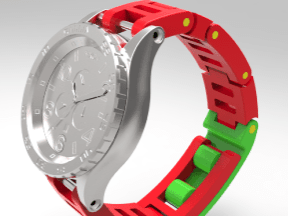Five emerging technologies could change ecommerce in just the next few years, giving shoppers new access to products and the ability to customize some items for their particular needs.
Mobile computing, cryptocurrencies, autonomous vehicles, 3D printing, and augmented reality each have the potential to dramatically change how, when, and why shoppers make Internet-enabled purchases.
Each technology’s impact could touch, if you will, a different part of the ecommerce business model.
1. Mobile Computing
It may seem odd to describe mobile computing as an emerging technology given the number of tablets and smartphones in use or, as predictive analytics firm Custora, points out, perhaps 37 percent of ecommerce site traffic now comes from mobile devices.
Nonetheless, mobile still has the potential to grow significantly in at least two ways: form factor and functionality.
At the moment, most mobile devices are rectangular bricks of various sizes. These candy-bar shared interfaces give shoppers access to just about anything on the web and millions of applications. But smartphones and tablets will have to make room for other shapes of mobile devices including products like Google Glass, Pebble Smartwatches, or even automobile-based mobile computing.
These new form factors will mean that shoppers may have a greater ability to shop, and could lead to new purchase patterns that impact how products are sold.
For example, think about what would happen when you combine a new mobile form factor like Google Glass or similar with an emerging mobile functionality, mobile image recognition. In theory, a person could be walking along a busy street, see a fashionably dressed person, touch the Google Glass, and instantly have the ability to buy the outfit that person was wearing from a favorite ecommerce retailer. If that doesn’t represent a change to ecommerce, what does?
2. Cryptocurrencies
Bitcoin was the first cryptocurrency, and it is almost certainly the best known. While many online retailers are concerned that the electronic money may be too volatile, those stores that do accept it find it to be “a viable, preferable alternative to credit cards that don’t carry the same risk of fraud and have lower transaction fees,” according to Mashable.
Adding Bitcoin to an ecommerce site is very easy, and retailers that are nervous about Bitcoin’s rapidly changing value can instantly exchange Bitcoin for other currencies, like dollars. Perhaps the least-known benefit of using Bitcoin, as Mashable pointed out, is that there is almost no fraud — from the merchant’s perspective — or chargebacks, making it safer for ecommerce merchants to sell internationally even to nations with relatively high rates of credit card fraud.
3. Autonomous Vehicles
Google and Amazon have both been experimenting with same-day delivery services in select markets. This same-day delivery trend is likely to have a significant impact on Internet retailing.
Of course, one of the greatest challenges to same-day delivery is cost. It is expensive to put a driver in a car and drive to someone’s house every time they place an online order.
There are ways to help reduce the cost of on-demand delivery, including optimizing delivery routes or distributing pick-up locations. Autonomous vehicles could also help to reduce the cost of offering same-day delivery. And while the technology may be some number of years off, the ability to deliver products to customers in hours instead of days will change ecommerce.
4. 3D Printing
Recently Amazon announced its new 3D printing store, which features items made on 3D printers.
Amazon’s approach to 3D printing technology seems to focus on the technology’s ability to decrease the time required to take a product from design to market. The supply chain is almost unchanged in this approach. There is a manufacturer, perhaps a distributor, and a retailer. The major difference is that the manufacturer can come up with new designs in hours or even create custom products for individual shoppers.
It would also be possible for some retailers to become manufacturers. An online shop selling drawer pulls could easily add a line of 3D printed pulls that could be customized and made to order.
It is also possible that some shoppers will have their own 3D printers, and that they may wish to buy downloadable designs. To further the drawer pull example, a shopper could have the option to order the product or download it for a slightly lower rate.
Finally, some are predicting the rise of 3D printing centers where consumers could bring a downloaded 3D design and print it out. This trend, if it happened, could also create new ecommerce opportunities.
5. Augmented Reality
If you trust Wikipedia’s definition, “augmented reality is a live direct or indirect view of a physical, real-world environment whose elements are augmented (or supplemented) by computer-generated sensory input such as sound, video, graphics, or GPS data.”
Put simply, augmented reality adds data to what we see around us. Similar to mobile image recognition, augmented reality has the potential to turn everyday activities like commuting to work or going to the park to play Frisbee into an opportunity to discover products that we might like to buy.
If augmented reality becomes a reality, it will certainly impact ecommerce.





